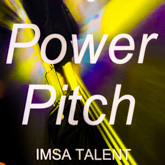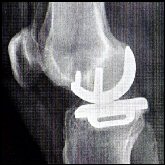Brain Tech – Part 1
Adapted from the Journal of the MIT Enterprise Forum – Chicago
John Jonelis
A member of the audience asks the entrepreneur, “What made you go after private equity? Didn’t you think of partnering with a large manufacturer?”
The speaker’s answer is abrupt and final. “NEVER,” he says. “I wanted to see this through fruition.”
Dr. Daniel DiLorenzo is the founder of NeroVista, a cutting-edge medical device company in Seattle that’s out to put a lid on Epilepsy. His comments are for an audience of entrepreneurs, investors, and PhDs assembled at the MIT Enterprise Forum, Chicago. This guy gives insights that I find both lucid and striking—insights on innovation that clear away the cobwebs—that make you sit up straight and say, “Yes!”
“In med tech,” says DiLorenzo, “and this is crazy but it’s true—research is seen as an EXPENSE. Higher management of a public company is measured by quarterly performance. Money for research takes away from profit.”
That’s true, I’m thinking. But how do you explain all those drugs and devices in the pipeline? He goes on:
“So the way you invest in research without showing that loss is to BUY a company. You’re buying equity that has a value theoretically equal to what you paid for it. So there’s NO LOSS. It’s a crazy reason. It’s not the only reason.”
I have to admit, I never rubbed those two concepts together that way. And it makes sense, too.
“Another reason is high risk,” he says. “Most large organizations aren’t in business to do high risk/return investments. Then, in a large organization, you have the slowness of the big company.”
The analogy of the big ship avoiding the shallows and taking a long time to turn springs to mind, but then he hits on something more fundamental and meaningful:
“The type of person who likes to work at a big company is a little more risk-averse; they might not be quite as creative; they sure aren’t going to be working till two in the morning on some idea that they’re passionate about. They’re going to do the 9-5 and keep their kids in college. And that’s fine, but that’s what you get.
“When you have a startup, everybody’s on the line. Your capital in the bank goes down, down, down to zero and you’re out of a job. Let me tell you—all I did was work. I didn’t even go skiing once in Seattle, even though I should’ve. You’re focused like a laser.”
And just like that, I understand in depth not just that large companies don’t innovate well, but why most of the innovation comes from entrepreneurs.
“Small companies tend to innovate quicker than large companies, and large companies know it,” he says. “So for all those reasons, the whole ecosystem in the United States favors creative entrepreneurs coming up with ideas. To make that a reality they have to raise money.”
So he didn’t partner with a large manufacturer who would have squelched his project. He built it himself using private equity, counting on the buyout. Great strategy.
Next issue, we’ll take a look at the way Dr. DiLorenzo went about raising that money. Because this guy is highly successful at that game, too.
.
GO TO PART 2 – CHECKLIST FOR FUNDING
.
Contacts
NeuroVista – http://www.neurovista.com/
MITEF Chicago – http://www.mitefchicago.org/ 
Photo Credits – NeuroVista
This is a publication of the MIT Enterprise Forum, Chicago.
.
Chicago Venture Magazine is a publication of Nathaniel Press www.ChicagoVentureMagazine.com Comments and re-posts in full or in part are welcomed and encouraged if accompanied by attribution and a web link. This is not investment advice. We do not guarantee accuracy. It’s not our fault if you lose money.
.Copyright © 2014 John Jonelis – All Rights Reserved
.
.









































































































































































Pingback: CHECKBOXES FOR FUNDING | Chicago Venture Magazine
Pingback: CHECKBOXES FOR FUNDING | The Gamemaker's Father
Pingback: CHECKBOXES FOR FUNDING | SoshiTech – Soshitech.com
Pingback: THINK FAST | Chicago Venture Magazine
Pingback: THINK FAST | The Gamemaker's Father
Pingback: THINK FAST | SoshiTech – Soshitech.com
Pingback: THINK LIKE A ZOMBIE | Chicago Venture Magazine
Pingback: THINK LIKE A ZOMBIE | SoshiTech – Soshitech.com